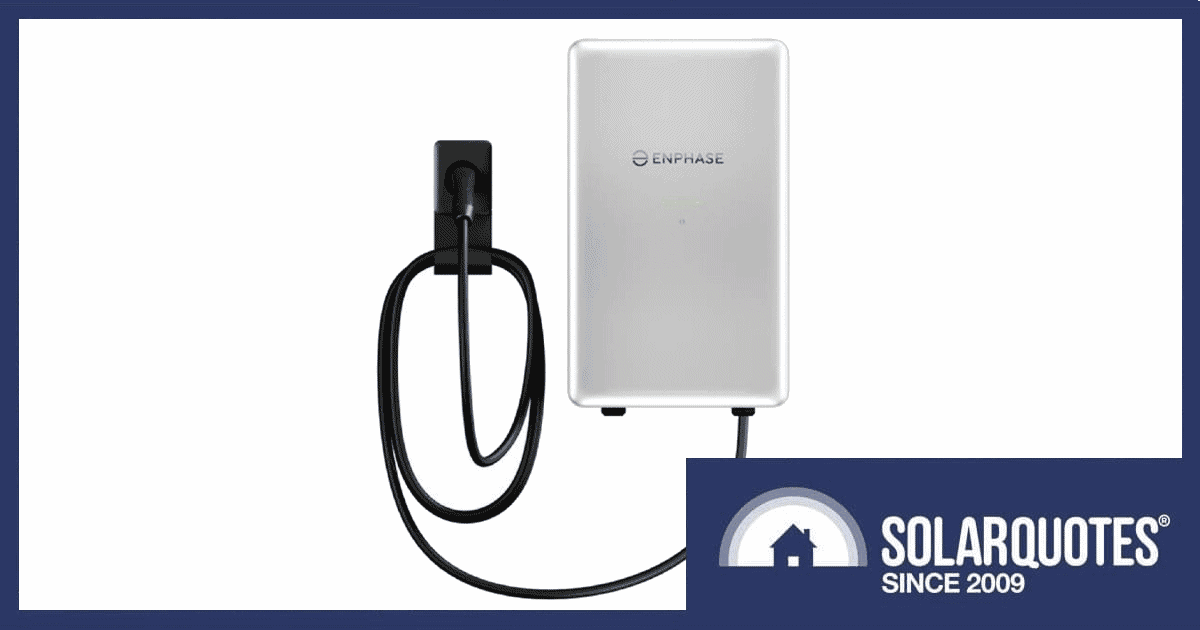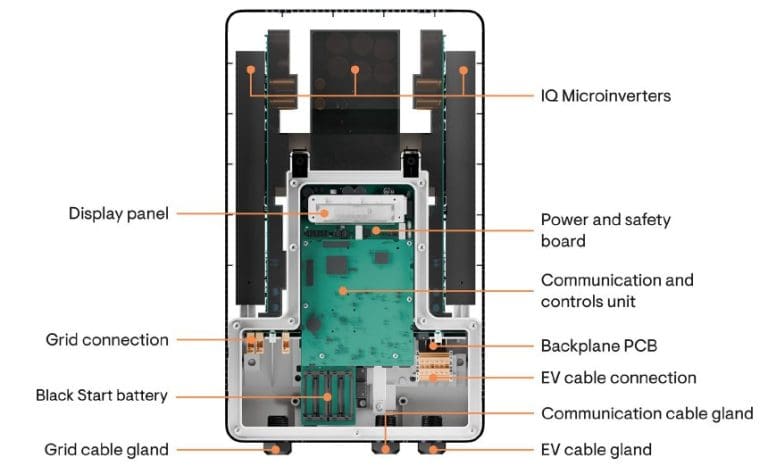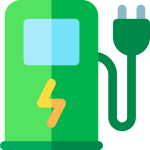
Enphase Energy has lifted the curtain on its latest product: the IQ Bidirectional EV Charger, a DC bidirectional charger designed to provide vehicle-to-home (V2H) and vehicle-to-grid (V2G) capability. The announcement represents a meaningful step in the evolution of home energy systems, positioning private EVs as flexible distributed energy resources – but as ever, the details matter. Here’s a practical, Australia-focused examination of what Enphase is offering, how it works, and what it means for homeowners and the grid.
What the DC IQ Bidirectional EV Charger does
Paired with Enphase’s IQ Meter Collar – a device that enables safe grid islanding – the DC IQ Bidirectional EV Charger allows homeowners to:
- Charge their EV.
- Power their home during outages (V2H).
- Export energy back to the grid (V2G).
All functions are managed through the Enphase App. Enphase notes that a home battery is not required for basic V2H/V2G operation, although pairing the charger with an IQ Battery adds full system flexibility and backup even when the EV is not plugged in.
Key technical specifications and features
- Bidirectional DC power up to 11.5 kW with sub-1% granular control.
- “Black Start” capability via an internal auxiliary battery to establish communications with the EV for immediate backup.
- Integrated three IQ10 EV microinverters (field-replaceable).
- AI-driven energy management and dynamic load balancing.
- Expected support for OCPP 2.1 (reported by Enphase).
- 7.6 metre tethered cable with CCS1 plug.
- Communications: Bluetooth, Wi‑Fi, Ethernet, CAN and LTE.
- Operating temperature: −30°C to 55°C.
- Enclosure size: 650 mm × 400 mm × 180 mm; weight under 23 kg.
- Field-replaceable components (microinverters, cables).
- 10-year warranty.

Enphase positions the charger to transition seamlessly between charging, backup and grid export based on site conditions and configured rules, with minimal manual configuration. The company has stated the V2H and V2G functions will only operate with EVs that support bidirectional power flow; non-bidirectional EVs can still use the charger for standard high‑power DC charging where compatible.
Availability and pricing
Enphase has indicated the IQ Bidirectional DC charger will reach global markets in the latter part of 2026. Local availability in Australia will depend on regional certification, grid-connection approvals and import timing. Enphase has not published indicative Australian pricing for the device; historically, advanced bidirectional systems carry a premium over standard chargers, and the announced 10-year warranty is notably longer than many current charger warranties.
How this differs from Enphase’s AC bidirectional offering
Enphase’s IQ EV Charger 2 (AC) – already available in Australia in recent months – provides AC bidirectional capability. The difference is fundamental:
- AC bidirectional charging uses the vehicle’s onboard inverter to convert AC to DC and vice versa; the charger coordinates but does not perform the bulk DC conversion.
- DC bidirectional charging shifts conversion to the charger, enabling higher-power and more tightly controlled flows, which can be advantageous for faster home backup and higher export capacities.
Both approaches require a bidirectional-capable EV, and both depend on standards, firmware and vehicle/charger interoperability.
How many EVs support bidirectional charging?
As of recent years the number of models that support true bidirectional charging (full V2G/V2H) has been limited but growing. Some legacy models and certain new vehicles in selected markets have offered CHAdeMO-based or inverter-supported vehicle-to-load features; other manufacturers are building ISO 15118-based bidirectional capability into new platforms. In short, while the supply of compatible vehicles is increasing globally, bidirectional-capable EVs remain a minority of the total fleet in Australia, and vehicle compatibility will be an important gating factor for homeowners considering the Enphase DC charger.
What this means for Australian households
- Resilience and backup: For homeowners in areas prone to outages, a bidirectional charger provides a way to use an EV as a backup energy source when plugged in – particularly when paired with an Enphase battery. The advertised “black start” feature is aimed at delivering near-instant backup during interruptions.
- Energy optimisation: When combined with solar, an EV with bidirectional capability and an intelligent energy manager can store daytime solar for evening use or export surplus to the grid under favourable tariff arrangements.
- Revenue and grid services: V2G export potentially enables participation in demand-response, frequency response or other grid services. However, monetisation depends on energy market arrangements, retailer products, and network/market approvals in Australia – frameworks that are still evolving.
- Installation and approvals: Exports to the grid typically require agreement from local network operators and may need specific meters or protective devices (e.g., metering, meter collars, switchgear). Enphase’s IQ Meter Collar plays into that requirement by facilitating safe islanding.
- Cost/benefit: While offering significant flexibility, DC bidirectional systems are more complex and likely more expensive than standard EV chargers. Buyers should evaluate expected use-cases (backup frequency, export payments, daily vehicle availability), vehicle compatibility and local incentives before committing.
Standards, interoperability and regulatory context
Bidirectional integration relies on several layers of standards and protocols. ISO 15118 and its successor specifications are important for secure communication and automated transactions between vehicle and charger. OCPP 2.1 offers improved control and telemetry for charging hardware interacting with back-end systems. In Australia, network rules, metering standards and retailer arrangements will shape the practical rollout of V2G services – including safety requirements for exporting energy, settlement for energy flows, and whether retailers will purchase exported energy from small-scale V2G participants.
In short: technology is converging, but policy and market arrangements will determine the speed and value of adoption in Australia.
Practical questions for buyers
- Is my EV compatible? Check your vehicle’s bidirectional capability and the communications/connector standards it supports.
- Do you want backup without a home battery? The Enphase DC charger supports that scenario when the EV is bidirectional, but consider whether you need full backup when the car is away – an Enphase battery can provide that complementary capability.
- Will your electricity retailer and distribution network allow export and offer payment for exported energy? Confirm before investing for V2G revenue expectations.
- What are installation requirements? An accredited installer should assess switchboard capacity, earthing, metering and any network approvals.
AC vs DC – a quick technical recap
- AC bidirectional: The vehicle handles AC↔DC conversion via its onboard inverter. Simpler charger hardware, constrained by the vehicle’s inverter capability. Suits many residential scenarios with lower peak power.
- DC bidirectional: The charger does DC conversion externally, enabling higher power and potentially more precise control over flows between vehicle, home and grid. Typically larger, more complex and costlier, but better suited to higher-capacity backup and export scenarios.
Market perspective and prospects in Australia
Australia’s EV fleet is expanding rapidly and interest in home energy management is high, driven by rooftop solar adoption. DC bidirectional chargers such as Enphase’s IQ device target homeowners who want higher performance V2X functionality and tighter integration with home energy systems. However, widespread V2G uptake in Australia will depend on the interplay of vehicle availability, charger deployments, standards adoption (ISO 15118, OCPP) and regulatory and commercial frameworks to compensate exported energy and grid services.
Conclusion
Enphase’s DC IQ Bidirectional EV Charger signals the growing maturity of home energy systems that treat EVs as central energy assets rather than just transport. For Australian homeowners, the promise is compelling: reliable backup, more efficient use of rooftop solar and the potential to participate in grid services. But the real-world value will hinge on vehicle compatibility, installation and certification processes, evolving market rules and the price point when the product lands locally. If you’re considering bidirectional charging, take a systems view – vehicle, charger, battery (if desired), installer and your electricity market – and wait for clear local support and pricing before committing.
FAQs
What is the difference between AC and DC bidirectional charging?
AC bidirectional uses the vehicle’s onboard inverter to convert power between AC and DC. DC bidirectional moves that conversion into the charger hardware, enabling higher power flows and finer control, but typically at higher cost and complexity.
Will the Enphase DC charger work with any electric vehicle?
No. V2H and V2G functions only work with vehicles that support bidirectional power flow. Non-bidirectional EVs can still use the charger for standard DC charging if the connector and vehicle permit.
Do I need an Enphase battery to use the IQ Bidirectional EV Charger?
No. The charger can provide V2H and V2G functionality without a separate home battery when paired with a compatible EV and the IQ Meter Collar for safe islanding. Pairing with an IQ Battery adds backup capability even when the EV is not connected.
When will the Enphase DC IQ Bidirectional EV Charger be available in Australia?
Enphase has indicated global availability in the latter part of 2026. Australian availability will depend on regional certification, approvals and distribution decisions. Confirm with Enphase or local distributors for exact timelines and pricing.
Can I export energy to the grid from my EV?
Potentially yes, but exporting energy requires approval and compliance with local network rules and your electricity retailer’s policies. Charging and export arrangements, compensation and technical approvals vary by network and retailer in Australia.
About EV Evolution
EV Evolution is the leading online platform dedicated to Australian electric vehicle owners and enthusiasts. We foster a vibrant community, delivering essential EV news and insights, and enhancing user engagement through our innovative, AI-powered chatbot for dynamic discussions. Our mission is to empower Australian electric vehicle owners and enthusiasts by fostering a vibrant, AI-driven online community that connects, informs, and advances the nation’s electric vehicle landscape.




